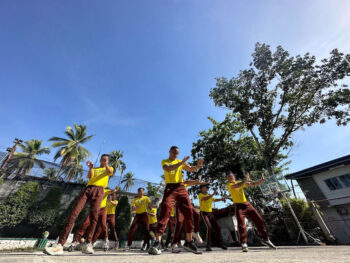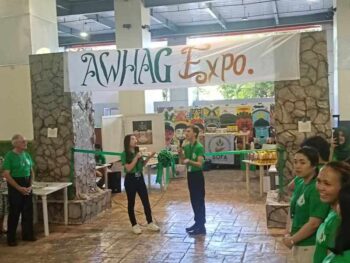III. Standoff Could Have Been Avoided
GENERAL SANTOS CITY, October 20, 2013 – On top of the economic cost of the three-week Zamboanga City “20-day war” in terms of property destroyed or damaged, loss of personal income, and unrealized business revenue that must sum up to P5 billion or more, the military spent P150 million and the government has allocated more than P3.5 billion for relief and rehabilitation of the victims in the seven war-torn villages. Only the perverted can justify the necessity of the destruction and the tragedy.
Could it have been avoided? Call the question water under the bridge; yet, water that will keep on flowing back.
Weighing the Costs
The disaster could have been avoided had MNLF Chairman Nur Misuari and his chief lieutenant, Commander Habier Malik, weighed the costs against the gains from their obstinacy and radicalism. They only looked at their views, turning blind to those of others; considered their rights, negating those of others; and made good their threats, mindless of the cost.
First, they believed the Philippine government had so ignored the MNLF right to the full implementation of the 1996 Final Peace Agreement that their last resort was to raise the threat of secession by declaring the Bangsamoro Republik backed by a show of force. Was that right being ignored?
Mr. Misuari knew. He had been – and must still be — head of the MNLF panel as the third party in the tripartite review of the FPA’s full implementation since 2007 – the Philippine panel and the OIC-PCSP (OIC Peace Committee in Southern Philippines) as the two other parties with the latter as the chair. Unless the presidential peace adviser Secretary Teresita Quintos-Deles lied Mr. Misuari knew he had stopped the filing of a bill to amend R.A. 9054 based on the tripartite review until the resolution of his three other demands.
The review was – and still is — not dead. He knew he had asked for the postponement of the September 16 conference, according to a report, before the outbreak of the Zamboanga City war. If he believed that the Philippine government had asked the OIC-PCSP to terminate the review, verifying it at the tripartite meeting last September 16 was the right recourse, not ventilating his anger in the media to justify the renewal of his secession threats.
The MNLF demand for the full implementation of the FPA had been overtaken by some political developments which Mr. Misuari was evidently refusing to recognize. Among these is the peace negotiation between the Philippine government and the MILF. The OIC-CFM has suggested in its Resolution No. 2/39-MM to “link” the FPA and the final Government-MILF agreement which the government and the MILF have favorably considered. Unfortunately, Mr. Misuari ignored these views.
Second, Mr. Misuari, Mr. Malik and MNLF partisans invoked their democratic right to hold a peaceful rally and to raise the flag of the Bangsamoro Republik in Zamboanga City plaza. They disregarded the authority of Zamboanga City to enforce the law and the privilege of the Zamboanguenos to say “NO” — also their democratic right.
A people’s sentiment is within their democratic right. In three previous plebiscites, the Zamboanguenos opted not to be under the MNLF; they also rejected MILF’s MOA-AD with the government. They have felt offended by proposals to include them in Muslim autonomy. In attempting to raise the flag of the Bangsamoro Republik flag in their city plaza, Misuari and his MNLF were rubbing MNLF salt into the Zamboangueno wound.
The irony was: Jolo, their hometown, had prevented them from raising their flag in the town plaza; so, they forced their way to Zamboanga City.
Third, they knew they were committing suicide. But they calculated against odds that the international sympathy they believed they would gain, including that of the United Nations, and the high cost of the disaster would compel the Philippine government to give in to their demands.
Preemptions
Taking it for granted: The government had taken it for granted that Misuari, in raising the threat of secession by proclaiming the Bangsamoro Republik last August, was only trying to get attention. He had done this several times in the past with his threats soon forgotten.
But the Aquino government failed to remember that in 2001 he made good his threats in Zamboanga City and in Sulu. The last time under the Arroyo presidency that the MNLF Youth Assembly declared him president of the Bangsamoro Republic, President Arroyo sent Secretary Jesus Dureza to talk to him and he backed down.
President Aquino III should have directed OPAPP Secretary Teresita Deles to follow up seriously the Misuari August declaration. If a meeting of the President and Misuari had been necessary, it should have been arranged. If the President had to meet MILF Chair Murad Ibrahim to launch and fast track the GPH-MILF peace negotiation, what was there to lose for the President to have met Misuari? The Zamboanga City disaster could have been averted.
Poor intelligence: DILG Secretary Manuel “Mar” Roxas III’s remark about “failure of military intelligence” rejected military claims to the contrary. Media reports from military and civilian sources confirm the lapses.
A relative of a rebel told media the MNLF members entered Zamboanga in small boats (MindaNews, September 22, 2013) from mid-August to early September. Residents confirmed the MNLF had infiltrated the villages — embedding themselves among the people there — months before August. Had this gone on unnoticed by military and police authorities?
The military admitted having noticed MNLF arrivals in the villages but being unarmed they could not be apprehended. Did they not suspect something wrong? Did they not put them under close surveillance?
What the military had blown up was the intelligence report of the impending attack by the main rebel force three days before September 9. By that the Navy, the Marines, the Army and the Police were able to put up a blocking force – curiously, though, not strong enough to prevent the rebels from breaking through and joining their comrades in the villages already fully armed.
Options
As reported in the media, the military estimated the rebels to initially number 180, later to 200 to 300. They took seven villages and held over 200 hostages to shield themselves from military attacks. Quite incredible! How could 300 occupy seven villages? More than 100,000 of the population were able to evacuate.
How to retake the villages, there were only two options: negotiation or military operation. The negotiation option would save lives, prevent dislocation and the consequent losses of income and revenues and avert damage to private and public property. The military option would be a disaster.
Negotiation option: MNLF Commander Habier Malik through the radio and hostage priest Fr. Ichael Ufana offered to release the 200 hostages on two conditions: (1) the issuance of safe conduct passes for his men to return to Sulu and Basilan; and, (2) the negotiation of the full implementation of the 1996 Final Peace Agreement.
The negotiation option failed:
(1) Zamboanga City Mayor Isabelle Climaco-Salazar, the head of the local CMC (Crisis Management Committee), had talked by phone with Misuari and Malik. She rejected the issuance of safe conduct passes; she had no competence to negotiate the full implementation of the 1996 FPA. While she was concerned about the safety of the hostages, the rebels had committed a crime and must be punished.
(2) The City Mayor did not attend seriously to the facilitation of the hostage priest; so did the military and the police – appearing that they wanted to take the direct line to Malik and earn the credit.
(3) Vice President Jejomar Binay preceded President Aquino III to Zamboanga City and talked to Misuari, his classmate at the UP. He told media Misuari and Malik had agreed to a ceasefire by midnight of September 13. However, Defense Secretary Voltaire Gazmin dashed cold water on Binay’s initiative, declaring: “If they stop firing, we will stop firing.”
(4) Binay’s initiative might have been unwelcome; however, it suggested that Misuari and Malik could yield to the President. Yet, President Aquino III did not explore the possibility. During his ten-day stay in Zamboanga City, he never asked for the hostage priest nor did he offer to talk to Misuari or Malik. Just curious: A direct line to Misuari or Malik could have averted the disaster.
Military option: The President’s message to Malik and his men was: “Surrender or perish.” On Day 5, the President’s order to the military was to safeguard the lives of the hostages. By Day 20, except for the few who were shot by rebels while trying to escape or killed during the military’s “calibrated action”, all the hostages were reported rescued or released; a few escaped.
The standoff or siege, many thought, could have ended on Day 5 – September 13, the day the President arrived – had the negotiation facilitated by the hostage priest been accepted and seriously pursued. The military option prevailed, its mission declared accomplished on Day 20 – a victory resting on demolished villages and at the cost of billions of pesos.
Unacceptable demands and the policy of crime and punishment precluded negotiation; military action prevailed and wrecked havoc. Just curious: What is the state of the Moro or Mindanao Problem? Is the Zamboanga City standoff or siege the last consequence of that state? Or, is it just the latest episode of the many more episodes to come – the water under the bridge that keeps on flowing back?
[Footnote: Media, including international wire services, refer to the Zamboanga City “20-day war” as a “siege” implying the rebels had laid siege on the city. Is that right? Can the MNLF rebels who were already in the villages be the besiegers? How can they lay siege on the city with the Wesmincom there?]
(To Be Concluded: State of the Mindanao or Moro Problem)
[“Comment” is Mr. Patricio P. Diaz’ column for MindaViews, the opinion section of MindaNews. Mr. Diaz is the recipient of a “Lifetime Achievement Award” from the Titus Brandsma for his “commitment to education and public information to Mindanawons as Journalist, Educator and Peace Advocate.” You may e-mail your comments to patpdiazgsc@yahoo.com]







